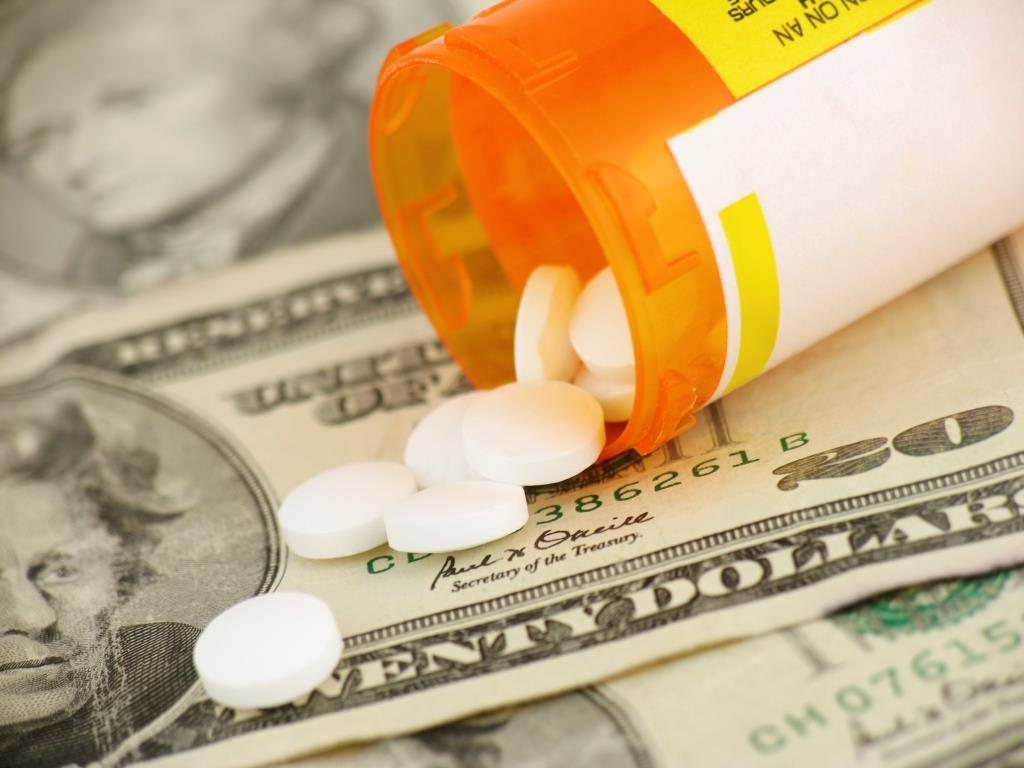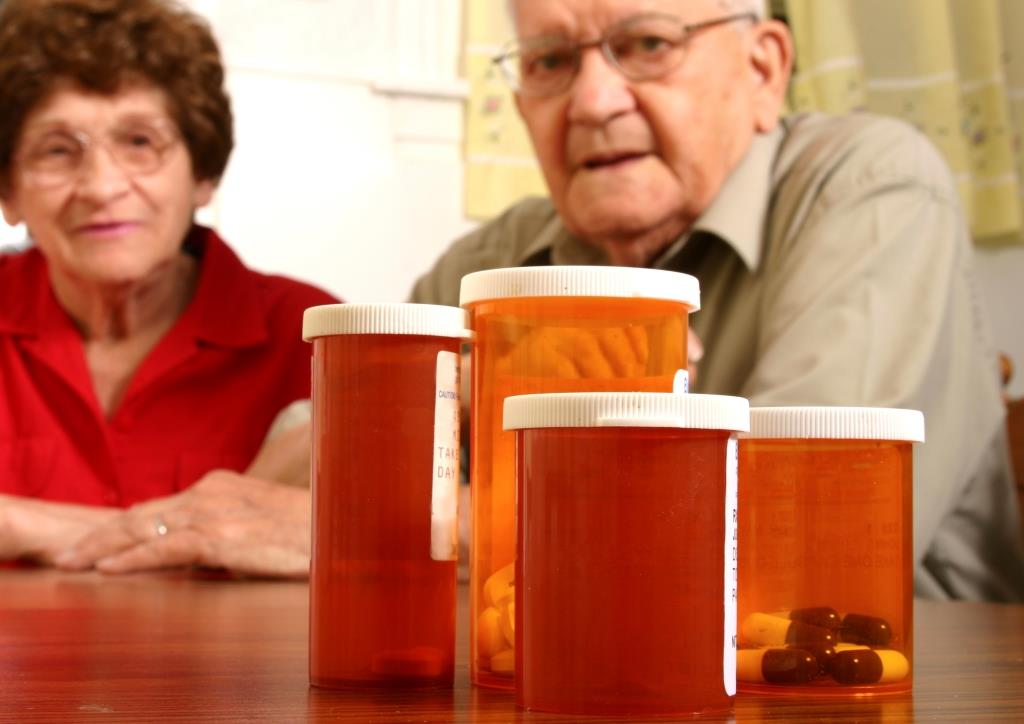Headlines I Wish I Hadn’t Seen
Blue Cross: 15% to 20% of enrollees aren’t paying premiums.
There are no reported examples of Americans dying by taking real, but F.D.A.-unapproved, medication bought online from a foreign pharmacy that requires valid prescriptions. This is after tens of millions of prescriptions have been filled online and internationally over the past 15 or so years, since online pharmacies were created. (NYT)
…American beachgoers will have to make do with sunscreens that dermatologists and cancer-research groups say are less effective and have changed little over the past decade.
That’s because applications for the newer sunscreen ingredients have languished for years in the bureaucracy of the Food and Drug Administration, which must approve the products before they reach consumers.
…The agency has not expanded its list of approved sunscreen ingredients since 1999. (Washington Post)
HT: Alex Tabarrok.
This is from an NBER Working Paper by Frank Lichtenberg:
 We investigate the effect of the vintage (year of FDA approval) of the prescription drugs used by an individual on his or her survival and medical expenditure. When we only control for age, sex, and interview year, we estimate that a one-year increase in drug vintage increases life expectancy by 0.52%. Controlling for other variables including activity limitations, race, education, family income as a percent of the poverty line, insurance coverage, Census region, BMI, smoking and over 100 medical conditions has virtually no effect on the estimate of the effect of drug vintage on life expectancy.
We investigate the effect of the vintage (year of FDA approval) of the prescription drugs used by an individual on his or her survival and medical expenditure. When we only control for age, sex, and interview year, we estimate that a one-year increase in drug vintage increases life expectancy by 0.52%. Controlling for other variables including activity limitations, race, education, family income as a percent of the poverty line, insurance coverage, Census region, BMI, smoking and over 100 medical conditions has virtually no effect on the estimate of the effect of drug vintage on life expectancy.
 A proposed FDA rule on labeling generic drugs could increase generic drug-makers’ exposure to product-liability lawsuits. This could add $4 billion a year to the cost of generic drugs, according to Scott Gottlieb, MD, and colleagues.
A proposed FDA rule on labeling generic drugs could increase generic drug-makers’ exposure to product-liability lawsuits. This could add $4 billion a year to the cost of generic drugs, according to Scott Gottlieb, MD, and colleagues.
Idiopathic pulmonary fibrosis is the scarring of lung tissue over time with no known cause, cure or approved therapy. Patients survive on average for only two to five years after diagnosis, and about 40,000 die of fibrosis-induced respiratory failure every year — roughly the same number as from breast cancer.
A drug called pirfenidone has been shown to delay the decline in lung function and even prolong life. But the FDA refused to approve pirfenidone when it was last reviewed in 2010 because the regulators claimed the evidence was insufficient, and now a new clinical trial shows how careless that decision really was. (WSJ)
Today, all the physiological data monitored in a hospital intensive-care unit — including ECG, blood pressure, pulse, oxygenation, sugar level, breathing rate and body temperature — can be recorded and analyzed continuously in real time on a smartphone. A small piece of hardware, either the size of a cellphone, or one integrated with a cellphone, held against your body, functions as an ultrasound device. It can deliver information instantly to you or anyone you designate, and the information rivals that collected in a physician’s office or hospital setting. It can do so when you are experiencing specific symptoms — no appointment necessary — and at virtually no additional cost.
Thanks to more than 20 Silicon Valley startups and advances in microfluidic technology, smartphones will soon be able to function as a mobile, real-time resource for rapidly obtaining all the studies done currently in a medical laboratory, including chemistries, blood values and microbiological studies. A device worn on the wrist, called Visi, has been approved by the FDA for hospital use that can measure your heart’s electrical activity, respiratory rate, blood oxygen and blood pressure (without a cuff), and transmit the data wirelessly. Many other such devices are coming out that could be used by patients in their own homes. (WSJ)
Paul Howard and Yevgeniy Feyman in Health Affairs:
Meningitis is a terrible disease that can kill its victims in a single day. About 4,100 new cases are diagnosed annually in the U.S., with a mortality rate of more than 10 percent. Even with treatment, survivors are often left with serious side effects that can include brain damage and limb loss…
Swiss drug manufacturer Novartis has developed a vaccine — Bexsero — that specifically targets this strain of meningitis; the drug has already been approved for use by the European Medicines Agency (EMA), the European Union’s equivalent of the Food and Drug Administration (FDA). And within about nine months the FDA allowed Princeton University to offer the vaccine on campus to its students.
But the drug is not available elsewhere in the U.S. And it won’t be until Novartis completes a costly phase III trial. The authors ask:
The natural question to ask is why the FDA shouldn’t just approve a product already approved for the European Union, Canada, and Australia, while monitoring the vaccine (as all vaccines are already monitored — Bexsero is being actively monitored in the E.U.) through postmarket surveillance records? (Indeed, the more than 5,000 patients vaccinated at Princeton are close to the total number of patients tested in the EMA required trials.)
 Alemtuzumab is used today as an intravenous treatment for a form of leukemia. But 20 years of research centered at Cambridge University also has shown that the action of this drug — depleting immune cells that become misdirected and attack one’s own body — is effective in treating multiple sclerosis.
Alemtuzumab is used today as an intravenous treatment for a form of leukemia. But 20 years of research centered at Cambridge University also has shown that the action of this drug — depleting immune cells that become misdirected and attack one’s own body — is effective in treating multiple sclerosis.
Under the brand name Lemtrada (a product of Sanofi and its U.S. subsidiary Genzyme), the drug has been approved in recent months for treating MS in 30 countries, including Canada, Australia and all members of the European Union. But on Dec. 27, Food and Drug Administration reviewers at the division level (subject to a final decision by top officials) rejected an application to use the drug here to combat MS. (WSJ)
Here is why it’s so hard for terminally ill patients to get compassion access to unapproved drugs:
On ly 6 percent of early-stage cancer drugs ever come to market, because many are found to have severe side effects or simply don’t work. Given those odds, companies hesitate to do anything to jeopardize a product too soon. If they give drugs away, a disastrous side effect or other poor outcome could spur bad publicity and extra scrutiny from regulators. Even more important, if doctors simply let people take untested medicines without going through all the clinical trials, drug companies would most likely never get anyone to enroll in them, never get the data on safety and efficacy for F.D.A. approval and never pass the gateway to big sales. “Even if patients with cancer are willing buyers,” writes George Annas, a Boston University expert on medical law, “drug manufacturers are not willing sellers.” (More)
ly 6 percent of early-stage cancer drugs ever come to market, because many are found to have severe side effects or simply don’t work. Given those odds, companies hesitate to do anything to jeopardize a product too soon. If they give drugs away, a disastrous side effect or other poor outcome could spur bad publicity and extra scrutiny from regulators. Even more important, if doctors simply let people take untested medicines without going through all the clinical trials, drug companies would most likely never get anyone to enroll in them, never get the data on safety and efficacy for F.D.A. approval and never pass the gateway to big sales. “Even if patients with cancer are willing buyers,” writes George Annas, a Boston University expert on medical law, “drug manufacturers are not willing sellers.” (More)